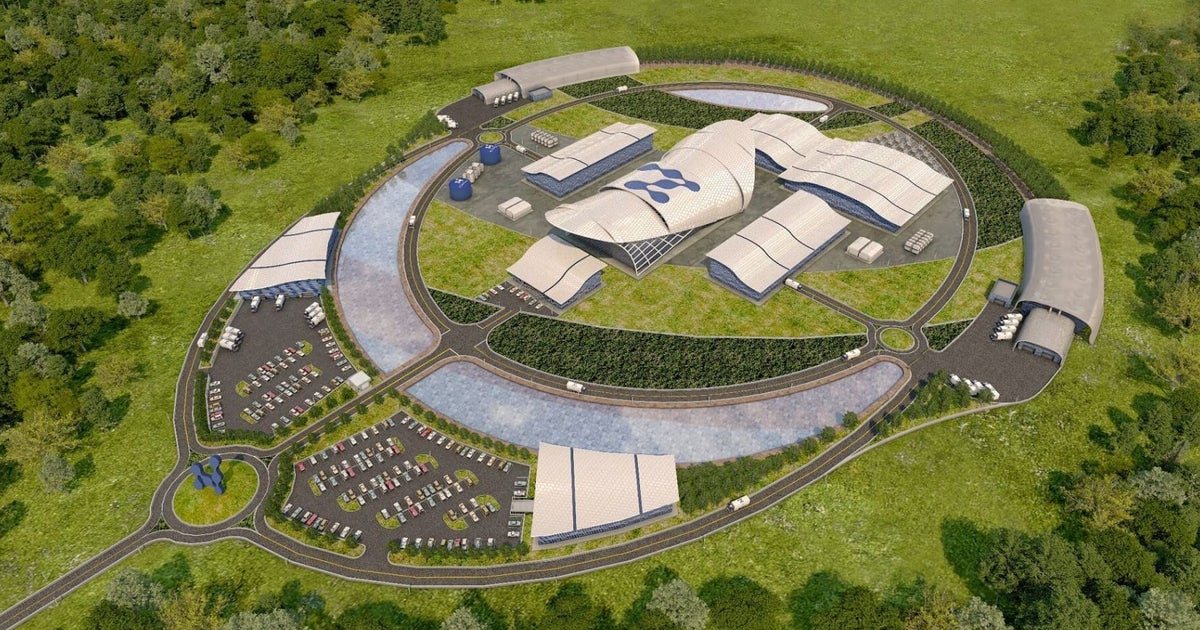The U.S. Project Meant To Debut Revolutionary Nuclear Reactors Just Fell Apart

The project meant to debut small modular reactors, the technology the nuclear energy industry hopes will spur a renaissance of atomic power construction, collapsed Wednesday night amid mounting financial troubles.
The NuScale Power Corporation based in Portland, Oregon, whose SMR design became the first in U.S. history to win the Nuclear Regulatory Commission’s approval last January, had planned to build a dozen of its small, partly factory-made atomic energy reactors at a federally-owned site in Idaho. The power plant was dubbed the Carbon-Free Power Project.
The company received more than $1 billion from the Biden administration to fund the construction. Once completed in 2029, NuScale planned to sell electricity to small electrical cooperatives across the American West via the Utah Associated Municipal Power Systems, a state-owned power company.
But as costs began swelling with inflation, NuScale told investors in March it would need more contracts on the books to sell at least 80% of the electricity it planned to generate by next February. That number had fallen to just 25% after a number of utilities canceled contracts to buy power from NuScale via UAMPS.
In a joint press release on Wednesday, NuScale and UAMPS said they “mutually agreed to terminate” the SMR power plant underway at a property owned by the Idaho National Laboratory, ending more than a decade of work.
“This decision is very disappointing given the years of pioneering hard work put into the CFPP,” UAMPS chief executive Mason Baker said in a statement. “Yet, this decision is the best course for the UAMPS members participating in the CFPP and doing what is best for those member communities will always be the guiding light in such decisions.”
NuScale, whose stock plunged as much as 40% per share after the announcement, has other projects in the works. The company made a deal in October to build two of its small modular reactors to power the blockchain startup Standard Power’s Bitcoin-mining facilities in Pennsylvania and Ohio. In September, the Japanese utility Chubu Electric Power Co. bought a stake in Nuscale, suggesting plans to build the reactors in Japan as the country revives its nuclear fleet 12 years after the Fukushima disaster.
In May, NuScale signed an agreement with steelmaker Nucor to look into building its reactors at the industrial giant’s steel mills. That same month, NuScale made inroads in Romania, where the Biden administration pledged up to $275 million to help deploy the American-designed reactors.
“NuScale will continue with our other domestic and international customers to bring our American SMR technology to market and grow the U.S. nuclear manufacturing base, creating jobs across the U.S.,” NuScale CEO John Hopkins said in a statement Wednesday.
First-of-its-kind energy technologies are always more expensive than initially planned. The only new nuclear reactors built from scratch in the U.S. in a generation, two large-scale machines at a Georgia power plant, bankrupted multiple companies and led to major utility scandals over the past 15 years.
But the first of the two came online earlier this summer. Thanks to the supply chains and workforce that have been established since, research by the Massachusetts Institute of Technology has calculated that building more of these large-scale AP-1000 reactors would be cheaper than constructing the country’s first SMRs. Yet no U.S. utility has made plans to build any traditional reactors, instead betting that, once the first SMRs are completed somewhere, the cost will quickly come down for more of these smaller, partly factory-made machines.
“Not gonna sugar coat it, this is a major blow to the next generation of nuclear power,” Katie Mummah, a nuclear engineer at University of Wisconsin-Madison, wrote in a series of posts on X. “Without a first-of-a-kind reactor, you’ll never get to nth-of-a-kind costs no matter how modular the reactor.”
The failure of the UAMPS project is likely to heat up the debate over nuclear energy in the U.S. Environmentalist opponents of atomic power say the most efficient source of zero-carbon electricity is too costly and takes too long to build to make a difference on climate change. But supporters of fission energy say it’s a vital tool to buttress solar and wind power, which need far more land than nuclear reactors and only generate electricity 30% of less of the time. By comparison, reactors in the U.S. pump out electricity more than 90% of the time.
Renewable energy projects, which also depend on support from the government, are hardly immune to the financial troubles higher interest rates and inflation of construction materials pose. Just last week, Danish energy giant Ørsted canceled two major offshore wind farms in New Jersey, a major blow to the country’s plans to decarbonize electric grids in the densely-populated U.S. Northeast where states have been shutting down nuclear power plants.







